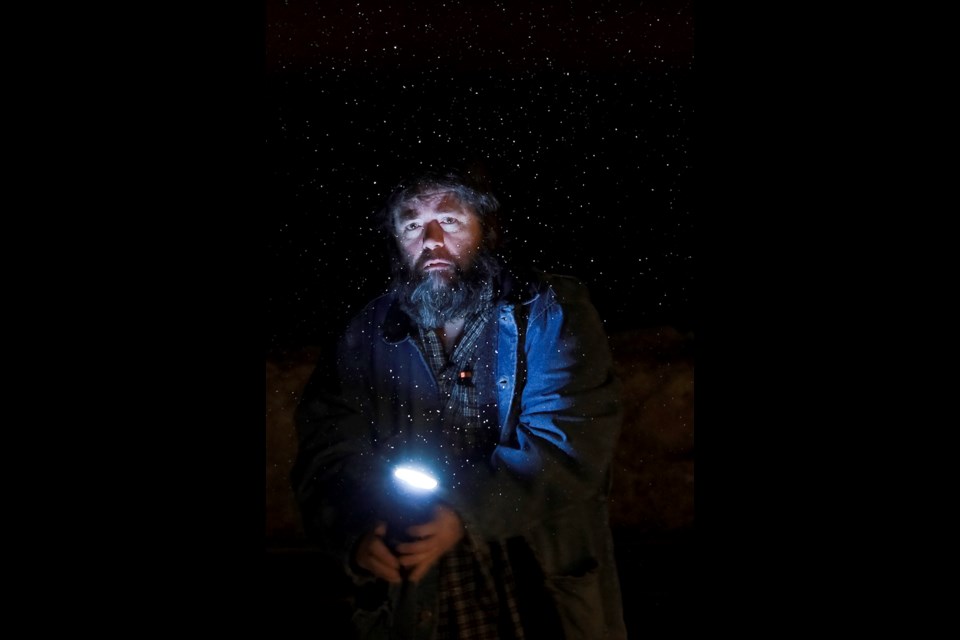Paul Lantz has spent most of his life in Moosonee.
A retired lawyer and a self-taught photographer initially he was supposed to be in the community for a year. He ended up staying for 36 years.
“I would be really sorry if I had not gone to Moosonee. It was a great experience to go there,” Lantz says. “I’m glad I stayed there. I look at pictures from Moosonee and I kind of miss the place.”
Lantz, 66, worked as a lawyer and an executive director at Keewaytinok Native Legal Service in Moosonee. Funded by Legal Aid Ontario, the clinic provides free legal services to low-income people.
Besides Lantz, there were another lawyer and two other staff working at the clinic.
“We didn’t have criminal or family cases, not a lot of them. At the beginning, we did whatever came in,” he says. “We did a lot of work with victims of crime, worked with First Nations, a lot of administrative law like social assistance, employment insurance.”
It was a warm day in May when a 28-year-old Lantz first arrived in Moosonee. He recalls there were no flies and he thought it was a really great place.
While he was up north, he captured a wide array of photos ranging from community events to images of water, land, animals and trains. He also enjoyed shooting ravens and the Moose River, especially during the freeze up in the fall or spring break up.
Lantz’s love for photography started at a young age. From his father, he learned that it was important to create a visual record of what happened and what’s going on.
“I like to take pictures sometimes of older buildings. It’s nice to go back and look at pictures of things that aren’t around anymore or events,” he says. “And then sometimes, to take (photos) of things that are really beautiful. I go out most mornings to watch the sun come up … to take pictures of that.”
His website, paullantz.com, features more than 150,000 photos mainly taken around Belleville and Moosonee. Lantz says almost all of his photos are free for people to download and print.
His photos, as well as writing, have also appeared in The Coast newspaper, which served the James Bay coastal communities.
“One great thing about Moosonee was journalism, not just the occasional stuff for out-of-town papers but the day-to-day stuff in Moosonee,” he says. “The fact that I was in Moosonee got me stuff in daily newspapers once in a while when they needed something from Moosonee plus the chance to do lots of local stories in Moosonee.”
Lantz says it’s also an honour when people want to use his photos for a funeral program for somebody.
During his time up north, he also visited Kashechewan, Attawapiskat, Moose Factory, Peawanuck and Taykwa Tagamou.
Before Lantz went into law school, he worked as a computer programmer for the SickKids Hospital in Toronto.
When he was in law school, Lantz says there wasn’t much focus on Indigenous issues or any specific courses but the situation is different nowadays.
“I was fortunate I had a summer job with the Ontario government where I did a lot of research into provincial law on reserve,” he says. “Now, there are intensive programs. There are a lot of courses that will teach about Indigenous or First Nation laws when people go to law schools.”
He notes the number of lawyers from northern Indigenous communities is also increasing, which is a “source of great satisfaction” to him.
In 2018, Lantz retired and returned to Belleville where he lives with his wife Denise.
Denise, who is from Fort Albany, worked for the hospital in Moose Factory and in Moosonee, where the pair met at a mutual friend’s birthday party.
“She has seven brothers and I met every one of her brothers and her sister before I met her,” Lantz says.
Unlike his wife, Lantz says he can’t speak Cree and he’s only well-versed in English and computer languages.
The lack of services and high grocery prices were among some of the challenges he encountered during his time in the northern community.
“Healthcare is an issue. It’s easier to access healthcare when you’re down here,” he says. “For example, I did a root canal when I was up there. It took four trips to Timmins. I flew out to Timmins four times for one root canal, so it gets kind of expensive as opposed to here where there are lots of doctors around.”
After spending 47 years away from Belleville, where he grew up, Lantz says it felt different going back. Having lived in a big metropolitan city like Toronto, he says he prefers living in a smaller place like Belleville.
“Anywhere you go, you can be there in 15 minutes. The traffic isn’t usually that bad. There are a lot of services and if you wanted to go to Toronto, you can just get on the train and go there,” he says.
For aspiring photographers, he advises them to take lots of pictures.
“That’s the biggest thing. You’re going to take (an) awful lot of bad pictures, then you’re going to take a few good ones,” he says. “Some mornings, I will go out and take a couple hundred pictures and I like 10 or 20 of them.”



